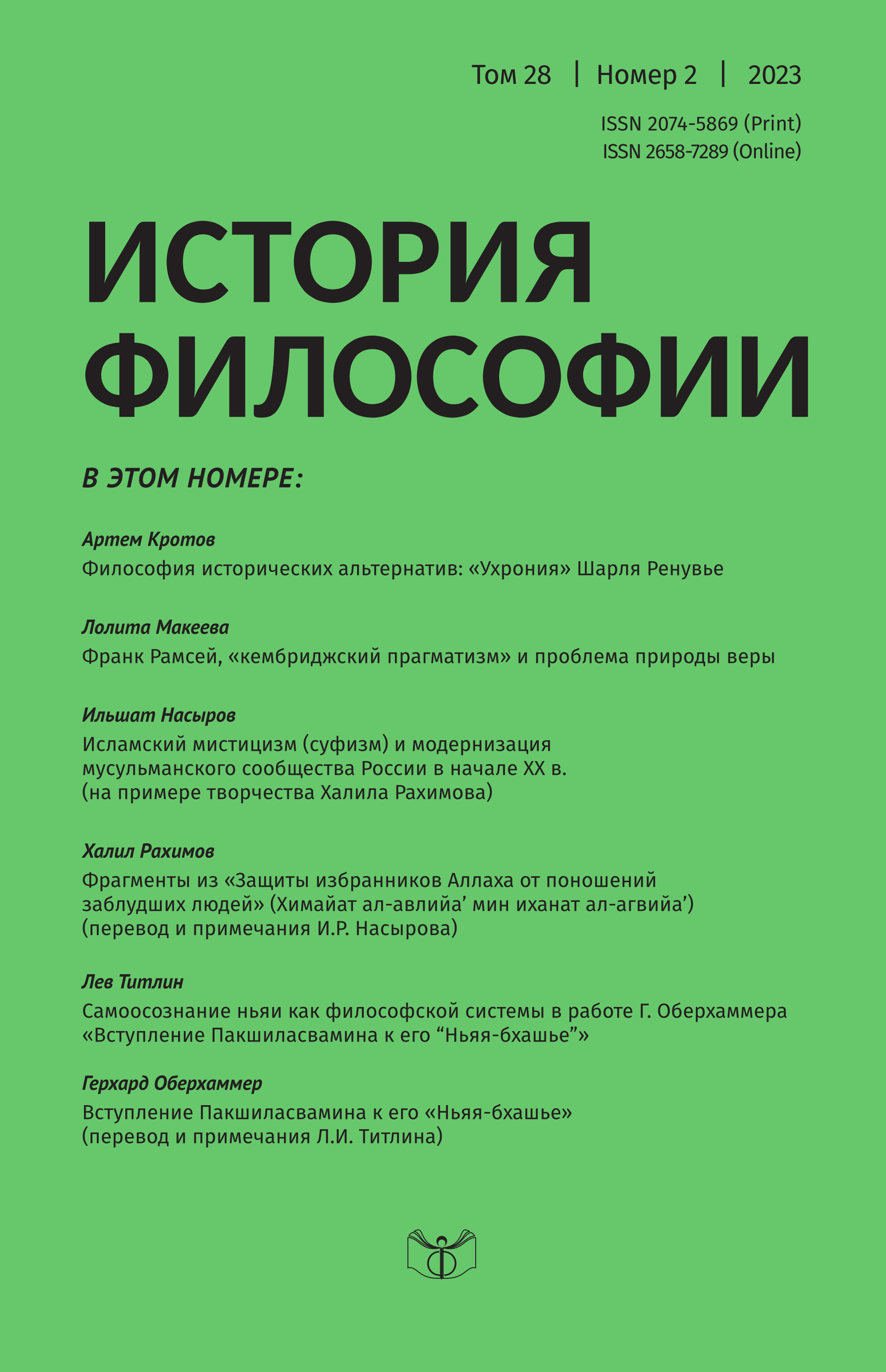Philosophy of Historical Alternatives: “Uchronie” by Charles Renouvier
DOI:
https://doi.org/10.21146/10.21146/2074-5869-2023-28-2-36-46Keywords:
Charles Renouvier, neocriticism, Uchronie, French philosophy, philosophy of historyAbstract
The article analyzes the philosophy of the history of French neo-Kantianism school founder, the creator of the idea of Uchronia, Charles Renouvier. Attention is focused on the theoretical attitudes inherent in various stages of the creative development of Renouvier, and on their connection with «utopia in history». In his philosophy of history, Renouvier opposed the concept of predestination, the need for all events taking place. He insisted on the presence of freedom in history, on the possibility of moving along other paths of social reality, not fixed by tradition. In the alternative version of history depicted by the French thinker, Christianity triumphed not in the West, but in the East. The Crusades took place but were geographically directed in the opposite course. Progress in understanding of religion later returned Christianity to the West in a form cleared of fanaticism. Renouvier connected the future of human civilization with the republican social structure. He predicted the end of all kinds of wars. In a cautious, veiled form he criticized the Second Empire regime in France. Renouvier’s concept contained both strengths and weaknesses. It is fruitful in its call to focus in political life on the idea of the effectiveness of human free will, the idea of maximizing the moral content of the concept of the state. It is vulnerable in its intention to attach decisive importance to the intellectual factor in history.

